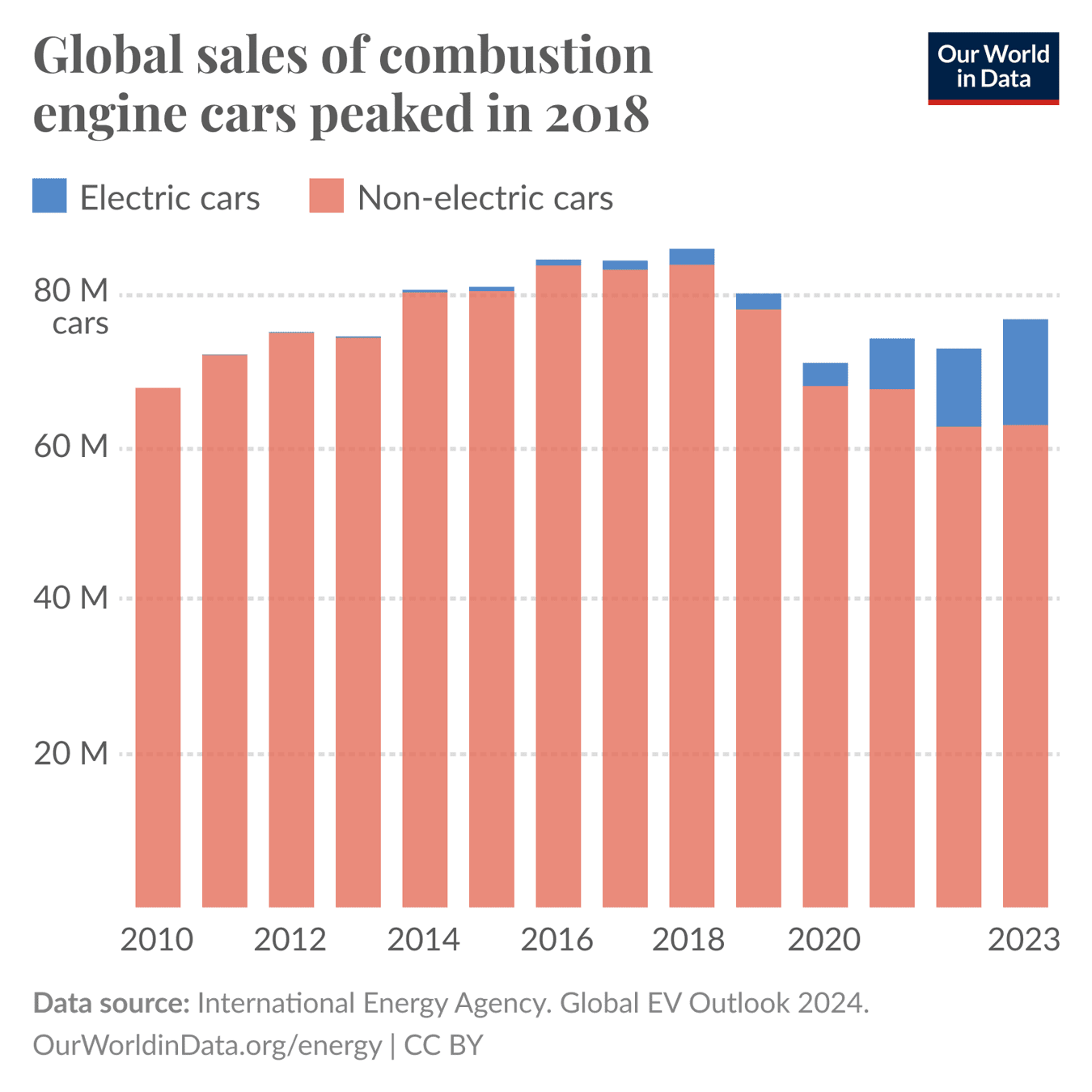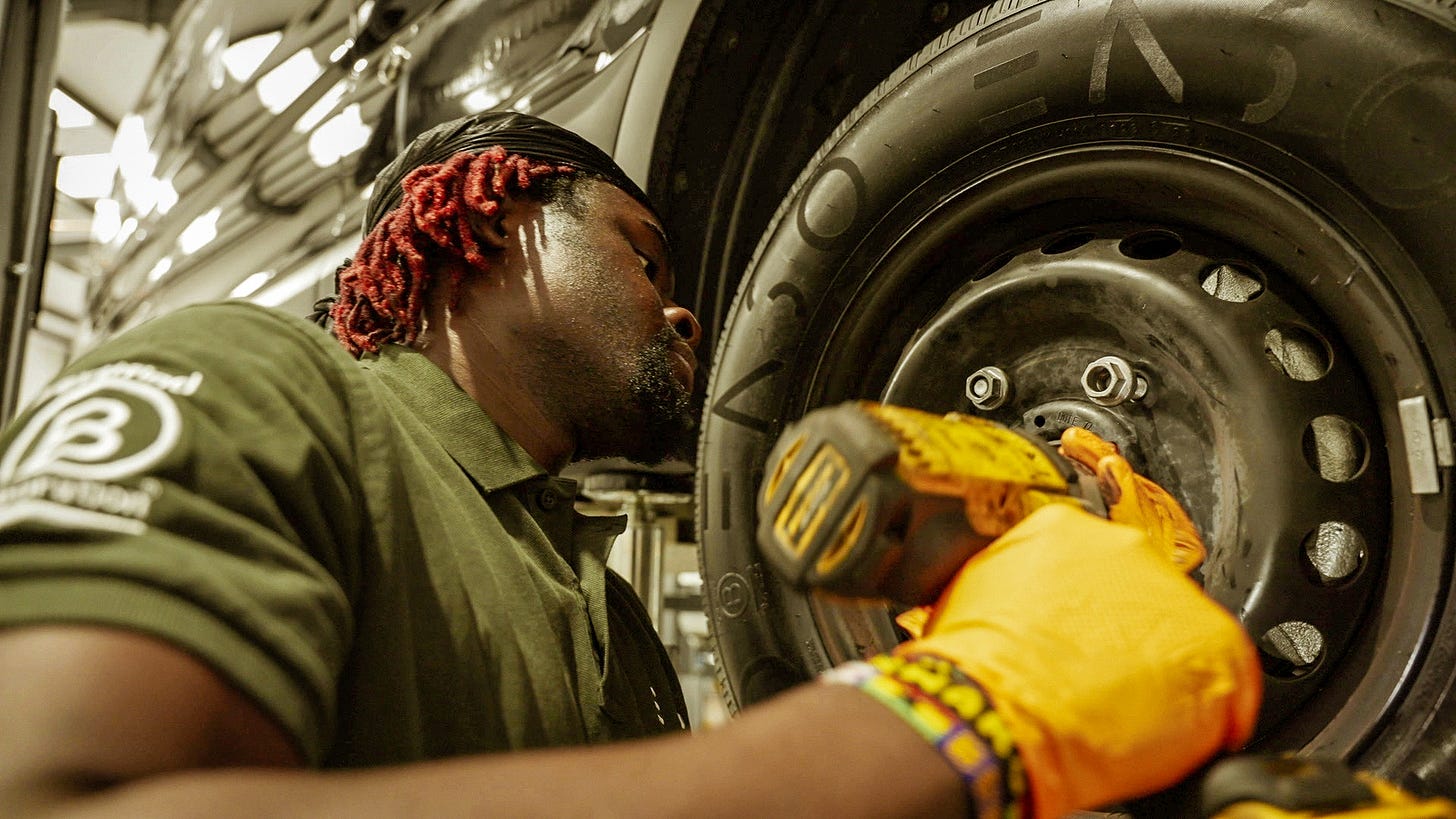How EVs’ efficiency hacks cut pollution and save energy
Regenerative braking slashes the cars' particulate emissions

By the time Colin Walker had driven to the top of a hill in the French Alps, he realised he might have pushed his hire car to the limit. It was a plug-in hybrid and the drive had more or less drained its battery.
While the car had an internal combustion engine, a charged battery helps such vehicles to run as efficiently as they can. Having taken in the views, Walker, head of transport at the Energy & Climate Intelligence Unit, a think tank, began heading downhill again, wondering what would happen. That’s when the regenerative braking kicked in.
After about 20 kilometres of careful downhill driving, in which the hire care harvested energy from its wheels, automatically slowing it down – rather than using friction brakes – the battery had regained about a quarter of a full charge.
“It was the first time I’d driven a plug-in hybrid,” says Walker, remembering the experience some years ago. “I was quite stunned by how much charge had gone back into the battery.” Not only that, by reducing its reliance on friction brakes, the car greatly lessened the amount of brake pad dust that it otherwise would have emitted.
Electric vehicles (EVs) have no tailpipe emissions. But all cars, whether they have batteries or internal combustion engines, spew out other types of pollution – notably, particulate matter from tyre wear and the rubbing together of brake pads in friction brake systems. Plus, the so-called “autobesity” trend towards ever-bigger vehicles, regardless of their power source, threatens to exacerbate this problem. EVs, however, have some hacks that could help.
Regenerative braking is one. To explain this a bit further, regenerative braking uses the torque of the car’s turning wheels to induce a current and return charge to the battery. Imagine it like a hand crank, except it’s the already-spinning wheel that’s doing the hard work. In an EV, this kicks in when you are coasting – driving forwards without pressing down on the accelerator.
Put your foot down
Many EVs allow you to set the intensity of this energy-harvesting feature and that includes, in some cases, a setting called “one-pedal driving”. This means you can drive using only the accelerator pedal. Press down on it to move forwards, or lift your foot off to slow down and come to a stop fairly quickly, without using the brake pedal at all. This harvests as much energy as possible from the motion of the vehicle. (While useful, some driving organisations don’t recommend using one-pedal driving in wintery conditions because it can lower the grip of your car’s wheels on icy roads.)
A 2021 study compared the brake pad particulate emissions from internal combustion engine vehicles to EVs and found that, without regenerative braking, the EVs appeared to fare worse.
However, a paper from researchers in the UK published in 2023 revealed that regenerative braking significantly reduced brake pad wear, meaning that the EVs tested emitted “negligible” particulate pollution from their brakes. “By 2035, we project that total UK brake wear [particulate] emissions would reduce by up to 39% compared with 2020 levels,” the authors wrote. A side effect of all this is that it helps brake pads in EVs last longer than they do in other cars.
Regenerative braking is not anything new. It was invented in the 1800s and has been applied to trams, huge freight trains that carry iron ore and even London tube trains. It is also present, to a lesser extent than many EVs, in petrol and diesel cars. But it continues to be the subject of technological development. For example, the extremely powerful regenerative brakes in today’s Formula E racing cars could influence the design of braking systems in consumer EVs.
Wear it well
So far, so good. But what about tyre wear? This also produces particulate pollution and accounts for more than a quarter (28%) of the microplastics that enter the environment. Current EVs are, on average, slightly heavier than equivalent internal combustion engine vehicles, meaning particulate emissions from their tyres could be exacerbated. This might be partly offset by reduced brake pad wear, however, and EVs are gradually getting lighter over time, meaning that the tyre wear problem could soon become less of a concern.
Companies are working on other solutions, too. UK start-up Enso has developed a new kind of tyre specifically for EVs, which it says can reduce tyre-related particulate pollution by up to 35%.
The Reengineer asked Enso how they make their tyres. A spokeswoman says the company relies on “higher grade materials”, though did not specify which materials. She added that improved material mixing during manufacturing also helps to make a more durable tyre. Enso’s tyres are already in stock at some fitting centres around the UK.
Overall, there’s little doubt that EVs are better for the environment than petrol and diesel-powered cars. EVs have lower emissions than those cars even when they are charged up in countries that have coal-heavy electricity grids. And while the mining and manufacturing processes required to make EV batteries are undeniably polluting, once the crucial metals are out of the ground, they can later be recycled, after the EV has come to the end of its life.
Tips and tricks
The RAC in the UK, an insurance and breakdown recovery service, has a list of tips to help drivers get the absolute most out of their EVs. This includes things like “pre-conditioning” – where you pre-heat or pre-cool your car while it is charging before you set off on a drive, to avoid running the battery down in transit. Relying on the heated seats and steering wheel rather than the air conditioning system also reduces overall energy consumption. And charging the battery to no more than 80% helps to extend its life.
It strikes me that, while they’re far from perfect, the technology packed into today’s EVs makes it possible for drivers to rethink how they drive to some extent. Which is interesting. EVs are, shall we say, reengineering how road vehicles use and conserve energy.
But EVs are still prohibitively expensive for many, and plenty of models suffer from what some call “autobesity”, which refers to the fact that road vehicles have – in general – got bigger and heavier over time, meaning they require more energy to run, are more dangerous when involved in collisions, and potentially wear out road surfaces more quickly.
“It is a huge problem,” acknowledges Walker. “EVs are certainly not immune to that criticism. We need smaller, cheaper EVs for the mass market.”
Such vehicles are beginning to emerge in countries including the UK. But the push for even more efficient cars, alongside better public transport for everyone, only seems to be getting more urgent over time.
Further reading on this week’s story
If you want a really detailed discussion of regenerative braking, including an explanation how it works and the technology involved, try this helpful video on YouTube or the pair of articles on this topic from Performance Motion Devices, Inc, a US manufacturer of motion control systems.
The rise of sports utility vehicles (SUVs) in Australia is so extreme that these cars threaten to wipe out the emissions reductions achieved through EV adoption and improved efficiency standards, reports The Guardian.
Constant improvements in battery technology, such as streamlining battery cells, could extend the range of EVs and the lifespans of their batteries.
Update: Added a note about regenerative braking in petrol and diesel cars.
Thanks for reading! If you enjoyed this story, don’t forget to share it with your friends and colleagues. You can also subscribe to The Reengineer and follow me on Bluesky.






